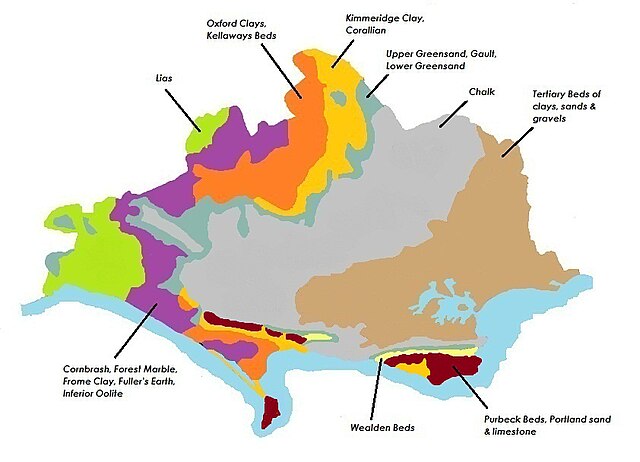Poole Basin
From Wikipedia, the free encyclopedia
Poole Basin is a geological formation that forms the western part of the much larger Hampshire Basin from which it is separated by the River Avon.

Geology
The rim and bed of the basin are formed by chalk, within which lie the Tertiary sands and clays underlying the Dorset Heaths. The most extensive deposits here are those of the Poole Formation or Bagshot Beds. At one time the whole area was almost all heathland lying on acidic soils. Between the chalk perimeter and the central heaths is a belt where the Reading Beds and London Clays surface, giving rise to richer, albeit still acidic, soils. Deposits of plateau and valley gravels overlie the sands of the Poole Formation, but their soils are likewise poor and acidic. Erosive forces have resulted in an undulating landscape with considerable local variation from narrow, steep-sided valleys and escarpments to areas of flat terrain. The highest point is Creech Barrow Hill (193 m),[1] the highest Tertiary hill in England, capped with Eocene limestone.[2]
References
Wikiwand in your browser!
Seamless Wikipedia browsing. On steroids.
Every time you click a link to Wikipedia, Wiktionary or Wikiquote in your browser's search results, it will show the modern Wikiwand interface.
Wikiwand extension is a five stars, simple, with minimum permission required to keep your browsing private, safe and transparent.
